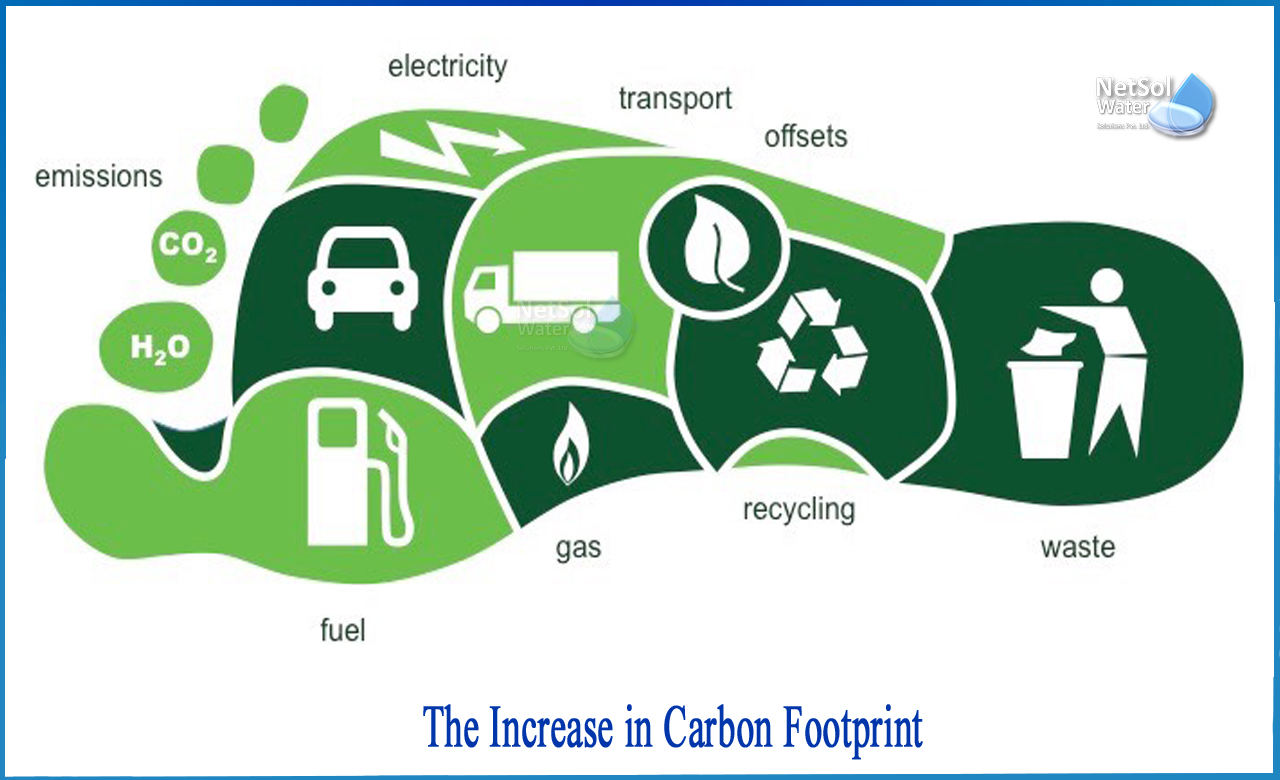What is increasing the carbon footprint?
The total amount of greenhouse gas (GHG) emissions caused by an individual, event, organization, service, location, or product, expressed in carbon dioxide equivalents, is referred to as a carbon footprint (CO2e). Greenhouse gases, including the carbon-containing gases carbon dioxide and methane, can be emitted by burning fossil fuels, clearing land, and producing and consuming food, manufactured goods, materials, wood, roads, buildings, transportation, and other services.
Most of the time, the total carbon footprint cannot be calculated precisely due to a lack of data on the complex interactions between contributing processes, including the impact of natural processes that store or release carbon dioxide.
As a result, Wright, Kemp, and Williams proposed the definition of a carbon footprint as follows:
“A total amount of carbon dioxide (CO2) and methane (CH4) emissions from a defined population, system, or activity that takes into account all relevant sources, sinks, and storage within the population, system, or activity of interest's spatial and temporal boundaries. Calculated in carbon dioxide equivalents using the relevant 100-year global warming potential (GWP100)”.
History
The carbon footprint concept and name were derived from the ecological footprint concept developed in the 1990s by William E. Rees and Mathis Wacker Nagel. While carbon footprints are typically measured in tonnes of CO2-equivalent emissions per year, ecological footprints are typically measured in terms of what the planet can renew. This calculates the number of "earths" needed if everyone on the planet consumed resources at the same rate as the person calculating their ecological footprint.
One component of the ecological footprint is the carbon footprint. Carbon footprints are more focused than ecological footprints because they only measure emissions of gases into the atmosphere that cause climate change.
Carbon Footprint Contributions
Food, consumption, transportation, and household energy are the major contributors to carbon footprints. Food, particularly meat, contributes significantly to carbon footprints. Beef is one of the most significant contributors to greenhouse gas emissions in the livestock industry. One kilogram of beef emits the same amount of pollution as driving 160 miles in your car. It is not necessary to completely avoid meat, but limiting your meat consumption can help you reduce your carbon footprint. Food transportation, pesticide use, and purchasing out-of-season foods all contribute to carbon footprints. Because of transportation, factory production, and additional packaging, processed foods emit more pollution than fresh foods.
Are carbon emissions rising or falling?
The release of greenhouse gases has steadily increased over the last decade, and as a result, the average global temperature has steadily increased. In fact, the Earth is now 1 degree warmer than it was before the Industrial Revolution. While 1 degree may not seem like much, it is; the 2018 National Climate Assessment warned that if global emissions do not begin to fall, and fall quickly, it could lead to an economic and environmental crisis. Of course, this has prompted some politicians to prioritize the transition to renewable energy and the creation of the Green New Deal.
Carbon Emissions: Are They Dangerous?
Carbon emissions are hazardous because they endanger the survival of our planet, animals, humans, and, ultimately, life as we know it. The amount of carbon emissions trapped in our atmosphere causes global warming, which causes climate change, with symptoms such as melting polar ice caps, rising sea levels, disruption of animal natural habitats, extreme weather events, and a slew of other negative side effects that endanger the planet, human and animal life, and our future.
Why to reduce carbon footprints?
In reality, the connections between greenhouse gas emissions and climate change are far too obvious and extreme to ignore. Global average temperatures are rising, extreme weather events are becoming more severe, ocean levels are rising, and acidification is taking place. All of these environmental threats are caused by human activity.
Conclusion
You can help to reduce overall greenhouse gas emissions by reducing your carbon footprint. Small changes made by everyone in our fight against climate change can have a big impact.
It's not only about the environment. Reduced carbon footprint allows you to live a healthier and more cost-effective lifestyle. Whether it's cleaner air, a healthier diet, or lower energy bills, lowering your carbon footprint means you're helping to combat climate change.
Netsol Water is Greater Noida-based leading water & wastewater treatment plant manufacturer. We are industry's most demanding company based on client review and work quality. We are known as best commercial RO plant manufacturers, industrial RO plant manufacturer, sewage treatment plant manufacturer, Water Softener Plant Manufacturers and effluent treatment plant manufacturers. Apart from this 24x7 customer support is our USP. Call on +91-9650608473, or write us at enquiry@netsolwater.com for any support, inquiry or product-purchase related query.



